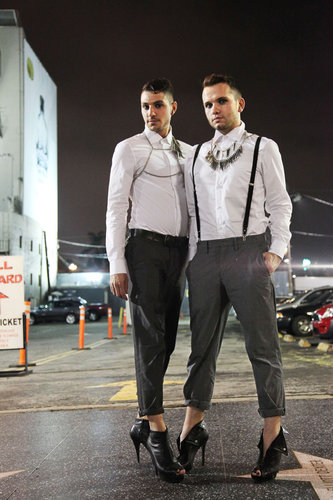Every day I wake up, and I read.
I turn on my computer and check my RSS feeds: queer news, international news, arts news, etc. It’s what you do when you work as a writer/journalist/blogger. You read to keep up with the world, see what’s going on, keep current.
Readers will recognize that often, I will write an op-ed or a short blurb about something I found online. I like to share. But I want to share a little bit more.
In that capacity, here is the first “Reading List,” a small collection of curated links to stories that interest queers and the people who love (and write about) them.
First off, an article by pornstar/writer Conner Habib, published on Salon. Habib presents a rather personal (and PG-13 masturbatory) story about discovering his sexuality at highway rest stops. The story is interesting in and of itself, as cruising as a concept is rarely discussed within “mainstream” media, let alone the discussion of men who have sex with men who don’t identify as (and possibly don’t identify what they’re doing as) being gay. He describes it almost like a secret society, all based on sex. He writes:
Once I saw a bag of condoms nailed to a tree with a sign that read, “Be
Safe Guys.” It was a kind gesture, but it somehow felt like an
intrusion. Because these places weren’t quite places, they weren’t
destinations; not for most people. They were away from hookup websites,
away from houses, bars, clubs, lives — removed from the world. And when
the world crept in, it made the experience less real, less itself.
And although I generally advise against reading comments in such stories, in this case, the comments are almost as entertaining as the story itself. Especially the incredulity at the discovery that such a thing/act/subculture exists.
*
During the late ‘80s and early ‘90s, many gay male writers began publishing what became known as “AIDS novels”: personal stories, both fictional and factual, about how the disease was affecting gay men. The genre died down during the mid-’90s, (books as Dale Peck’s Martin and John, published in 1993 is often considered to be one of the first “post-AIDS novel” novels, and the end of the era) and AIDS and AIDS-related stories became less and less read, or considered.
This week, The Atlantic published a first-person account of living with a partner with HIV, or serodiscordance. Read it.
*
Last, but certainly not least, I found an old article that the NYT published a short piece about men who wear heels.

Image by Amy Dickerson for NYT
The NYT has always tried to be on top of trends, but really, men wearing heels isn’t that new, and it wasn’t then.
However, inspired by the idea of men in heels, allow me to offer you a little weekend office dance party, courtesy of Alien Alien.

 Why you can trust Xtra
Why you can trust Xtra


